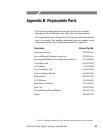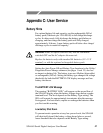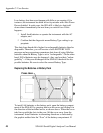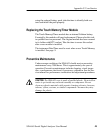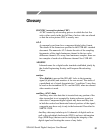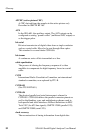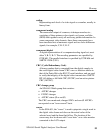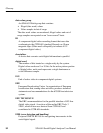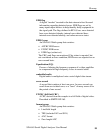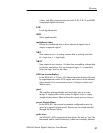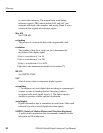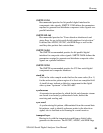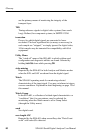
Glossary
SDA 601 Serial Digital Analyzer User Manual
53
coding
Representing each level of a video signal as a number, usually in
binary form.
component analog
The unencoded output of a camera, videotape recorder, etc.,
consisting of three primary color signals: red, green, and blue
(RGB) that together convey all necessary picture information. In
some component video formats, these three components have
been translated into a luminance signal and two color difference
signals, for example, Y, B–Y, R–Y.
component digital
A digital representation of a component analog signal set, most
often Y, B–Y, R–Y. The encoding parameters are specified by
CCIR 601. The parallel interface is specified by CCIR 656 and
SMPTE 125M (1991).
CRC (Cyclic Redundancy Code)
A binary number that is computed from the digital samples in
the serial digital video frame. CRCs serve a function similar to
that of the Parity Bit in the RS-232 serial interface, and are used
to verify the integrity of the digital video transmission. SMPTE
RP 165 defines a full field CRC (FFCRC) and an active picture
CRC (APCRC).
CRC change group
An SDA 601 Watch group that contains:
G APCRC changes
G FFCRC changes
G APCRC status (Ø or not Ø)
The CRCs are monitored; changed CRCs and non–Ø APCRCs
are reported on an “error second” basis.
cursor
In the SDA 601, the “cursor” is used to pinpoint a single word in
the digital video frame and discover the actual value of the
selected word and the three that follow. The location of the
cursor may also be shown with “cross hairs” on a video monitor
connected to the AUX output.



